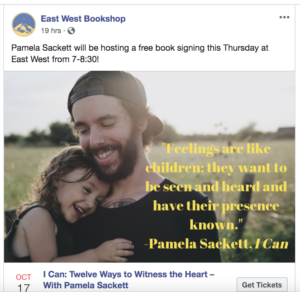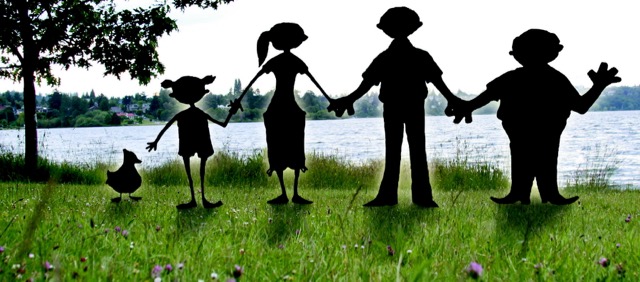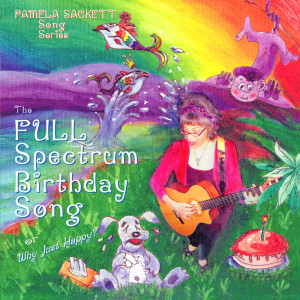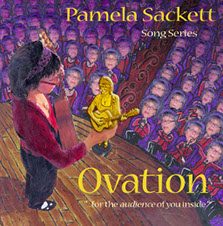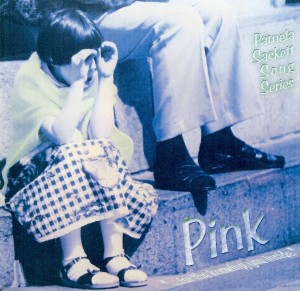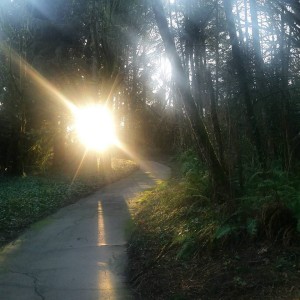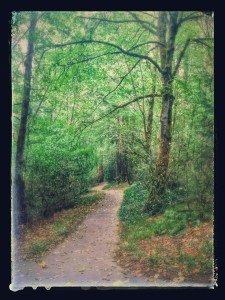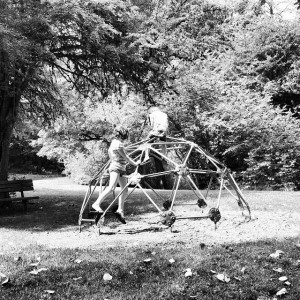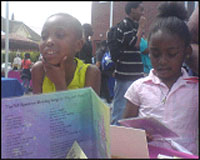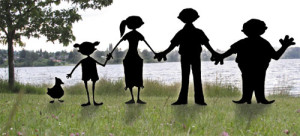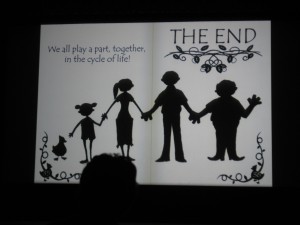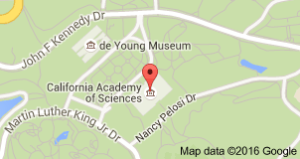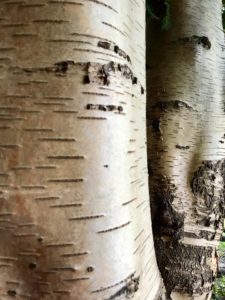
In 1992, I was writing a workshop description for an addictions conference in Seattle—a workshop that involved my theatrical monologue book series’ characters whose truth was buried between the lines—two words occurred to me: “emotion literacy.” I had never heard that juxtaposition before. It seemed like a sign. Emotion literacy. These two words together were an epiphany, a name—so satisfyingly in sync—for the creative process I planned to escort my workshop participants into—to speak—for these oh so familiar, lovable characters who had lost their true voice.
Remember, this is 1992, before Daniel Goleman’s article and subsequent book on emotional intelligence. Goleman and the two scientists, from which he drew his thesis, were unknown to me. 1992…well before the social networking deluge.
The term “emotion literacy” immediately wove its way into my life; next, as part of the sub-title for my first book of rhythmic prose—Speak of the Ghost: In the Name of Emotion Literacy— my self-retrieving poetic stream, re-calibrating my perception of my family of origin legacy; shortly thereafter, my DBA—Emotion Literacy Advocates; and—once I nudged myself off the fence—the imprint for the risky publishing of Speak of the Ghost, two years hence.
I used that term again and again: when Seattle University’s Psychology Department put my book on a required reading list because the (then) head of that department, Dr. Kevin Krycka, got my book’s gist; when Seattle Repertory Theatre Company’s (then) head of the Rep’s education and outreach, Ted Sod, hired me to conduct my “creative writing for emotion literacy” workshops for youth in detention, felons in prison, for the Rep’s band of teaching artists and theatre patrons who grokked my emotion literacy vision. During the rest of that decade, I used the term in subsequent collections of rhythmic prose: “Member of the Heard: Righteous Rants and Reasonable Raves from an Emotion Literacy Advocate,” “The Radical Nurturer: Public Journal for Emotion Literacy,” Saving the World Solo and my play Trigger of Light with emotion literacy my lens for the youth in detention plight. I used and referenced that term at all my artist residencies, when I spoke and performed for events, conferences and broadcasts, in Seattle, Canada and Mexico.
Emotion literacy was planted in me eons ago, it grew out of my roots and into my personal identification, a proud symbol of truth and the freedom to utter it. Emotion literacy—two words that belonged to me, as far as my eyes could see.
About mid-decade, friends began to call me with caution in their tone: “Pamela, you’d better check this out,” they blared at me over the phone, “people are using the term emotional literacy!” Another friend advised me to trademark “emotion literacy” as some kind of self-preserving solution. I was incredulous: “How can you trademark evolution?”
2001, I found myself in a room with a handful of dear artists, in ad hoc formation: it was time to turn “Emotion Literacy Advocates” (ELA) into a 501(c)3 non-profit organization. From then and into the present, ELA delivers art-infused invitations to love ourselves more completely in the name of truth, so that truth can grow more widely known and supported by adults, on behalf of themselves and our tender-hearted youth.
 “Emotion literacy” then and now, spells out my raison d’etre! What those two words meant when I conjured them, with unadulterated intention, and what they mean now is so clear, after serving what I know to be the crux of their invention, for over twenty-five years: the inner truth, learning its language, often imperceptible and fleeting—emotions/behaviors can be so misleading—the truth for truth’s sake, the truth for which I yearn; it takes practice and devotion and strength to find it, and to keep finding it. That I have learned.
“Emotion literacy” then and now, spells out my raison d’etre! What those two words meant when I conjured them, with unadulterated intention, and what they mean now is so clear, after serving what I know to be the crux of their invention, for over twenty-five years: the inner truth, learning its language, often imperceptible and fleeting—emotions/behaviors can be so misleading—the truth for truth’s sake, the truth for which I yearn; it takes practice and devotion and strength to find it, and to keep finding it. That I have learned.
By 2015, emotionAL literacy and its propagators grew exponentially and could easily be found circulating the term around. Who is the arbiter of what it means and what it’s for? I find myself responding angrily, about the vast disparity between meanings and relative intentions, more and more.
Why this sense of threat in a culture of disposable memes and terms and expressions and words, words, words bandied about? Still, I want to shout, in vigilance and outrage, in defense of my beloved two words, for their release from disparity’s cage.
If I were to sign up for Yale’s emotional intelligence program “Ruler,” they would tell me I was in the red zone and that anger must be curbed. They would tell me I can and should pick my feelings (the bright and cheery ones of course) and they would instruct me to then strategize on how to behave to “get those feelings.” One of their students would say: “being mad is pointless,” “cool down,” “think happy thoughts,” “do something energetic!” The RULER teachings would ask: “what can you do to speak in an appropriate volume; what can you do to bring yourself into the yellow.” And I ask: “what are you instructing me to swallow?”
Students and teachers participating in RULER say: I want to “feel inspired, positive, happy, fulfilled, joyful.” Are those feelings or complex, value and belief-driven desires? Is “positive” a feeling or socially-sanctioned attire?
Where do middle school children take their feelings of grief and their longing…to the school psychologist? Where do students take their feelings of fear and their experiences of powerlessness, in the face of pressures to keep up, to fit in and to achieve? The suggestion to “get” a feeling—one that you are not actually already having—sure seems like added pressure to me and the loss of a compass, albeit a difficult one to read. Without emotion literacy for emotion literacy’s sake, we can be mighty surprised by the emotions that arise out of those feelings we never fully met because we were too busy focusing on which ones we are allowed and instructed to get.
What happens when some of the less cheery feelings crop up for the long-awaited light of day, inside or outside the classroom? Do the teachers and children—or any of us—take the time to really hear what those feelings have to say? When we “pick” a feeling, do we then uninvite the ones we already have? We can, eventually, pick or revise or fake, and certainly, name, evaluate and regulate a behavior but a feeling, one that you might be in the habit of concealing, even from yourself?
Yale says “emotions drive learning, decision-making, creativity, relationships and health.” To say emotion drives anything is like saying the body of your car takes you from point A to B. I thought it was the motor underneath: the feelings, needs, values, memories, associations, beliefs—motor components behind the scenes—doing the driving.
One of the young RULER students is quoted on their site: “When the teachers check in with the Mood Meter, it makes me realize that they care. I have my down days, but when they check in, it reminds me that I still need to pay attention. I feel more lifted afterwards, and the better I feel, the better I work.”
What does it mean to feel “down” or “better?” What is the goal? What does it mean to have a “yucky feeling,” a description I found recently on a Sesame Street show!
When feelings are rated, where do the ones with low ratings go? Where do the ones with nary an honorable mention go? Isn’t the capacity to feel our greatest asset and the most valuable, or, is our winning asset the ability to rate which feeling is the most palatable?
As an artist, I wouldn’t want anyone, including myself, to tell me how or what to feel. I want to know and understand how I actually feel; and, I no more want to pick a feeling as pick an expression. When I write, when I express, I want to be surprised and discover something beyond my conscious, linear, approval-seeking mind, something deeper, more connected. I want to be that free to learn something new and true. It seems these “evidence-based” programs provide more than a clue about what is expected of you, largely, in terms of behavior and, so tragically, in terms of what to feel.
My feelings can tell quite a different story than my emotions and emotion’s kin, behavior. Recognizing incongruity between emotional behavior and hidden feelings was fertile ground for me discovering emotion literacy and its pearl: finding, knowing and welcoming every aspect of my otherwise long-neglected inner world. If expectations stop at the first juncture of observation—emotions/behavior, and feelings are picked like a flavor—when does one learn to navigate and savor one’s own nuanced and layered interior landscape?
I have yet to see any of these programs advise on just having feelings, witnessing them, as long as need be. That, I fear, would be seen as an impediment to productivity—productivity in the short term, that is.
In one of the creative writing for emotion literacy classes I taught, back in the nineties, I found myself throwing out the class plan because three of the girls came in crushed to have heard that one of their mothers received a medical death sentence. I decided to pause as a way to make space for all the feelings in the room, to let that topic of illness and death rule! It would rule one way or another, whether, or not, I acknowledged it. I chose to open the door, lest it go underground, shunned. One of the boys told his mom and his mom complained to the teacher about the way that class was run. It appeared his mom considered that topic private and that the class should have carried forth with its original plan. I am pleased to report that many of the girls thanked me—and so did several of the boys and their teacher—after that experiential class that did include a fruitful writing session, amidst tears. Maybe that class for the students was not happy, joyful or fun, but, certainly, a most relevant, truth-telling one.
 I commend everyone and anyone who attempts to learn and teach how to achieve and I recoil when academics proclaim “emotionAL literacy” its conquering strategy. With control and achievement the holy grail, “happy” and “positive” explicitly hailed, the whisper of an unmeasurable truth might slip everyone’s notice; except for the kid, lonely and subsumed, tucked away in his basement bedroom, steeped in un-charted realms of confusion, hurt and loss. That’s when these measured programs wrest an interminable cost. On paper, it may not initially show so it may seem not to matter, until one invisible child’s invisible world becomes glaringly shattered. How much evidence of “success” might we find were we to instruct this boy to ditch his “down” and get in the “yellow?” Kids know how to pretend when their survival depends on it, especially when group consensus takes hold, but, when something else, something unnamed is brewing, a reckless undoing. Shall we wait again for bullets to fly, bullies to flare, suicides’ sirens to sound? When do we learn, in this human culture, to slow this machine way down, well before the implosion? That’s what I want to know as my anger unfolds into sorrow for those who fall by the wayside.
I commend everyone and anyone who attempts to learn and teach how to achieve and I recoil when academics proclaim “emotionAL literacy” its conquering strategy. With control and achievement the holy grail, “happy” and “positive” explicitly hailed, the whisper of an unmeasurable truth might slip everyone’s notice; except for the kid, lonely and subsumed, tucked away in his basement bedroom, steeped in un-charted realms of confusion, hurt and loss. That’s when these measured programs wrest an interminable cost. On paper, it may not initially show so it may seem not to matter, until one invisible child’s invisible world becomes glaringly shattered. How much evidence of “success” might we find were we to instruct this boy to ditch his “down” and get in the “yellow?” Kids know how to pretend when their survival depends on it, especially when group consensus takes hold, but, when something else, something unnamed is brewing, a reckless undoing. Shall we wait again for bullets to fly, bullies to flare, suicides’ sirens to sound? When do we learn, in this human culture, to slow this machine way down, well before the implosion? That’s what I want to know as my anger unfolds into sorrow for those who fall by the wayside.
 It took me over two decades to define and re-define “emotion literacy.” Oh you can find several definitions of emotionAL literacy and most are a far cry from mine. That far cry propels me to swim harder with my definition which I’d be hard-pressed to distill any farther:
It took me over two decades to define and re-define “emotion literacy.” Oh you can find several definitions of emotionAL literacy and most are a far cry from mine. That far cry propels me to swim harder with my definition which I’d be hard-pressed to distill any farther:
Emotion literacy translates emotion when emotion obscures the truth.
No promises here of high grades, suitable conduct, worldly acquisitions, impeccable couth…just the truth. That’s it folks and anything else is something else…something upright and decent and, perhaps, even worthy but something else, with another name.
UPDATE: Since writing this article (which is also available through “Medium” online publication), I have written I Can: Twelve Ways to Witness the Heart, a “tiny tome” (according to one of its readers), a manifesto, the comprehensive definition of emotion literacy (in plain English), it’s challenges and why it is profoundly purposeful and worthy of my dedication for over two-and-a-half decades of my life and counting.
Send questions, requests for interviews with Pamela and/or permission to re-print this article to info(at)emolit.org, thanks!
©2018 Pamela Sackett
tree trunks: Giacinta Mazzoccone Vosika
leaf-wall, city landscape: Jeff Rogers
tree bark: Rebecca Love


